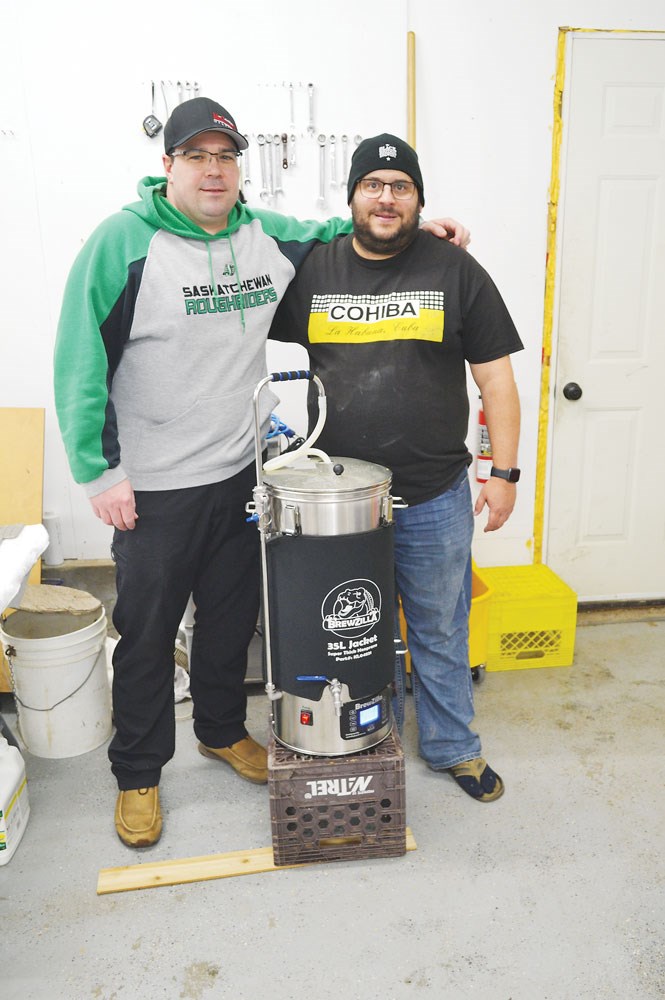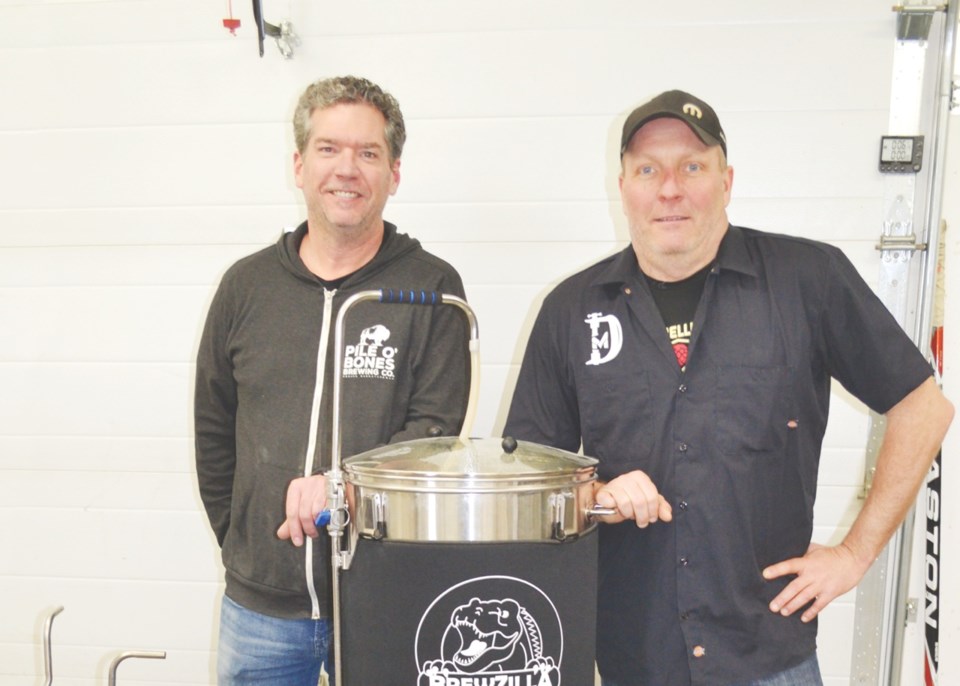The world of beer has changed a lot in the past 20 years, with craft breweries emerging to satisfy a variety of taste pallets.
And while it took some time for Saskatchewan to join the “craft beer revolution,” there is now a thriving craft beer scene in the province, with breweries popping up in many communities.
This has extended to home-brewing efforts, with some local residents now meeting on a regular basis, and taking the home brews to another level.
Jeff Pierson and Russell Mantei have been meeting since mid-November. A short time later, they were joined by Braden Hubick and Kurt Schmidt.
Mantei noted that he and Pierson have been involved with brewing for a couple of years, touring different breweries in Saskatchewan, North Dakota and Minnesota.
But they started making their own beer late last year because of their love of craft beer.
“We’ve been very fortunate to make some relationships with professional brewers who have been very gracious to us, and let us experience what it’s like on the commercial side. So when you combine that with just being a couple of craft beer geeks, it just seemed like the right thing to do,” Mantei told Lifestyles.
When Mantei said he was going to starting brewing his own beer, Pierson decided to join him in a partnership.
“All these guys that we have talked with, the professional brewers, they all started over in their garages and in their basements,” said Mantei. “That’s where they started. So they have all encouraged us to do this … our friends in the professional industry.”
Those friends have provided a lot of guidance.
“I don’t know how a guy starts home brewing and has no connections to the craft beer industry already,” said Pierson. “Either myself or Russell can pull out our phones and call a half dozen different professional brewers and ask them a question.”
They have received recipes from a craft brewery in Minnesota. Rebellion Brewery in Regina has filled up four pales of two-row malt for a minimal amount to help them get started.
They could have started with a brew in a bag for a couple hundred dollars, but they went with more advanced equipment, including a 10-gallon system and equipment such as kegs, coolers, fermentation control temperatures and other amenities.
So far they have brewed an ale, a cream ale, a stout, an India Pale Ale (IPA) and a northeast IPA. A recent creation is a raspberry milkshake beer.
“With each brew, we gained more confidence,” said Pierson.
The New England IPA is a favourite of Mantei’s, while the milk stout is likely the best they’ve made. He also praised the hazy pale ale that Schmidt and Hubick concocted.
When they created a clone of a beer made by Malty National in Regina, some of their friends couldn’t tell the difference between the two beers.
Brewers told them to buy a pH metre before they began, because they have to track it several times during a brew. They were also told to eliminate oxygen at any stage, and to adjust temperatures for different types of beers.
Making their own beer is a very precise art form. Since they observed brewing on a commercial level, they knew the importance of attention to detail.
“You start with a precise amount of water, then you add a precise amount of grain that has to be at a certain temperature for a certain length of time,” said Pierson.
The first pH check has to happen at a specific time, too.
“It’s chemistry,” said Mantei. “Anybody that tells you that making beer is easy, they failed chemistry. You can make something resembling beer, and you might make OK beer, but to make great beer, you have to find your chemistry. Water additions, and the acidity … of the water, it’s so important.”

There are multiple stages as well, which means it takes several weeks to create a beer from the start of the process to when it’s ready for consumption.
Hubick and Schmidt, who also share a passion for craft breweries, joined Pierson and Mantei’s brewing last November, and then decided to purchase their own system to make their own recipes.
They have brewed five beers with their equipment, which they called the “baby brother” of what Pierson and Mantei have. It’s a 35-litre system that makes about a half of what Mantei and Pierson brew.
Outside of the tank, the equipment they have is similar.
“There’s a lot of knowledge that you gather every time you do it. You learn new things, and it’s a challenge every time,” said Schmidt.
They’ve even been crushing their own grains using a grinder and they purchased a couple of conical fermenters that they can use to ferment under pressure and harvest the yeast, which serves the dual purpose of saving money and brewing better beer.
So far they have crafted two hazy pale ales, an oatmeal breakfast stout and a northeast IPA.
“I think we pretty much nailed the juicy pale ale,” said Hubick, noting that it was about 4.8 per cent alcohol, making it easy to drink for those who are just getting into craft beer.
Schmidt noted that when he lived in Europe, he tried a lot of different beers. Coming back to Canada, there weren’t a lot of options, but craft beer has started to take off in Saskatchewan in the last few years.
Hubick said the get-togethers to make their own beer have built friendships and camaraderie.
“I really enjoy just taking simple grains and making a tasty … finished product. That’s the craft of seeing what I can make with your own two hands,” Hubick said.
Both are surprised with the precision required to make great beer, but Hubick describes himself as a perfectionist when it comes to making beer, so he enjoys learning how much a beer can change with adjustments to time and temperature.
“It’s really a lot more of a science. People think it’s just beer,” said Schmidt.



